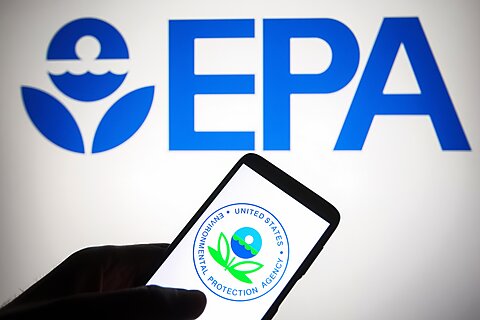
Health and Human Services Secretary Robert F. Kennedy, Jr., hosted Food and Drug Administration Commissioner Marty Makary, who announced today they will order the phase-out of petroleum-based food dyes in food products as part of their initiative to “Make America Healthy Again.”
Secretary Kennedy’s and Commissioner Makary’s decision is not evidence-based but ideologically motivated. Kennedy and Makary are attempting to impose their risk-benefit preferences on the rest of us.
Petroleum-based synthetic dyes are artificial colorants made from petrochemicals—compounds derived from crude oil. These dyes are commonly found in a variety of products, such as processed foods and beverages, cosmetics, pharmaceuticals, textiles, and plastics. Manufacturers prefer them because they yield bright, consistent, and long-lasting colors. They are also cheaper and more stable than natural dyes, making them more cost-effective alternatives. Examples include Red 40 (Allura Red AC), Yellow 5 (Tartrazine), and Blue 1 (Brilliant Blue FCF). These are among the eight dyes slated for phase-out.
There is no conclusive scientific evidence that petroleum-based synthetic dyes are broadly harmful to humans; almost all studies are correlative, and correlation is not the same as causation. However, some individuals may experience allergic reactions to one or more of them. Yet, despite growing public concern about the safety of these substances, cancer death rates and cardiovascular death rates continue to decline, and average life expectancy has risen, from an overall rate of 76.8 years in 2000 to 78.4 years in 2023 (after dipping during the COVID-19 pandemic years).
In announcing the phase-out, Dr. Makary cited a 2007 study involving 3‑year-old and 8–9‑year-old children in Southampton, England, published in The Lancet. The study suggested that artificial colors, sodium benzoate preservative, or both may increase the risk of “hyperactivity” in children. The researchers utilized the Global Hyperactivity Aggregate (GHA)—a composite measure that combines results from multiple behavior rating scales completed by parents, teachers, and trained observers—to assess hyperactivity.
However, researchers have never standardized or validated the GHA as a diagnostic tool, as it combines subjective reports from various sources. Consequently, an FDA advisory panel expressed skepticism regarding the Global Hyperactivity Aggregate (GHA) score used in the Southampton study. In the transcript from the FDA’s Food Advisory Committee meeting held on March 30, 2011, concerns were raised about the study’s methodology, including using the GHA score. Specifically, the FDA panel noted that the GHA is not a standardized or validated clinical diagnostic tool, which limits the conclusiveness of the study’s findings.
Nevertheless, ongoing concerns about these additives have prompted some researchers and advocacy groups to call for more independent and up-to-date testing, especially on child behavior, brain development, and long-term effects.
In contrast, organic foods do not contain petroleum-based dyes. US Department of Agriculture regulations prohibit food makers from using them in products they label as “organic” or “made with organic ingredients.” Several non-governmental third-party certifiers also prohibit synthetic food dyes and most artificial preservatives, such as sodium benzoate. Examples include California Certified Organic Farmers (CCOF), Oregon Tilth Certified Organic (OTCO), and Quality Assurance International (QAI). All three operate under the USDA National Organic Program (NOP) umbrella but are independent, third-party certifiers responsible for inspecting and verifying compliance with organic regulations.
Organic foods use natural colorants, such as beet juice (for red/pink tones), turmeric (for yellow), annatto (for orange), spirulina (for blue-green), and paprika or carrot juice.
It’s not as if American consumers lack access to foods without synthetic dyes or artificial preservatives. Nowadays, most supermarkets and grocery stores offer various organic products. Many supermarkets have store sections devoted to organic foods. Some stores, such as Whole Foods, purvey only products without artificial preservatives and synthetic food coloring. With the growing market for foods devoid of additives, manufacturers brandish “no preservatives,” “no artificial coloring,” and even “non-GMO” on their labels. People who are concerned about the harmful effects of these additives have plenty of alternatives to choose from.
Just as consumers who prefer organic foods over conventional options can freely purchase them in a growing market regulated by third-party certifiers, individuals should also have the option to buy products that contain these additives if they determine that the benefits outweigh the risks.
In my book, Your Body, Your Health Care, I discuss adults’ inherent right to self-medicate:
To British philosopher John Stuart Mill, only the affected individual is best qualified to judge whether a risk is worth taking because no other person cares more about that individual’s best interest. Even if patients make the wrong decisions, Mill maintained that society should regard them as if they are the experts about what is in their best interests because they have insights into their own priorities for well-being and happiness that no other person can have. Mill argued against the government blocking people from purchasing certain drugs unless they obtained a physician’s prescription, arguing that it interferes with patients’ choices and may make certain drugs more expensive or more difficult for them to get.
The right to self-medicate is integral to self-ownership and autonomy.
Just as autonomous adults have the right to self-medicate, they also have the right to consume any food products they desire, provided they do not infringe on the equal rights of others.
The HHS and FDA regulatory monopolies should not infringe on adults’ autonomy to choose less expensive or more visually appealing foods containing these substances, if they wish. Autonomous adults must have the freedom to make their own risk-benefit assessments.
A just and equitable society safeguards its people not by limiting their freedom to choose but by holding accountable those who cause genuine harm. If synthetic food dyes or artificial preservatives are found to cause cancer or other harm, and manufacturers fail to take reasonable steps to identify and disclose those risks, then consumers should have the right to seek damages through product liability claims. Market competition and civil liability work together to protect consumers.



